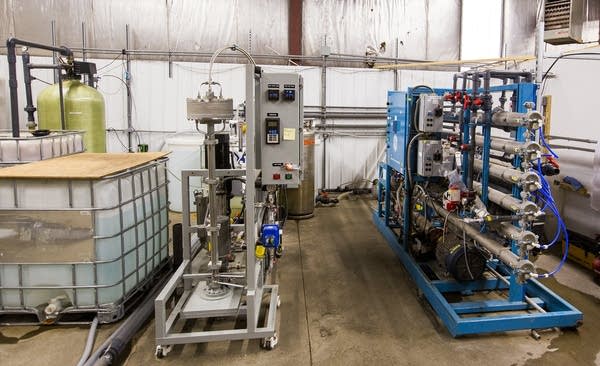Scale of PolyMet technology leads to more questions

A reverse osmosis machine owned and developed by Polymet operates in a test facility Friday, September 27, 2013 in Virginia, Minn. The device will clean water coming from the mine site.
Derek Montgomery / For MPR News
Go Deeper.
Create an account or log in to save stories.
Like this?
Thanks for liking this story! We have added it to a list of your favorite stories.


